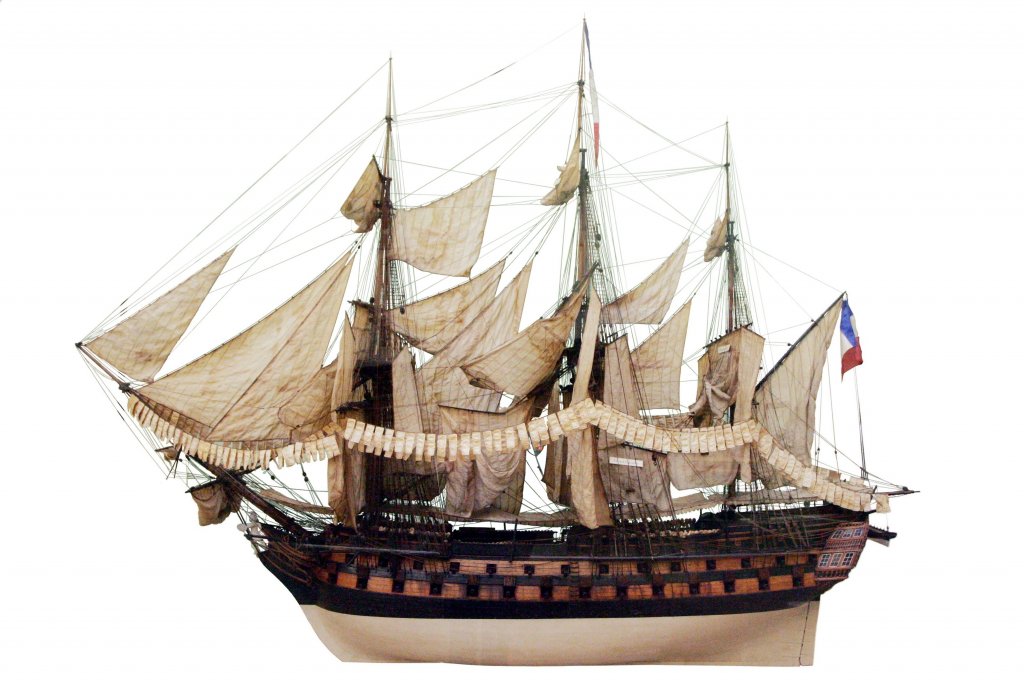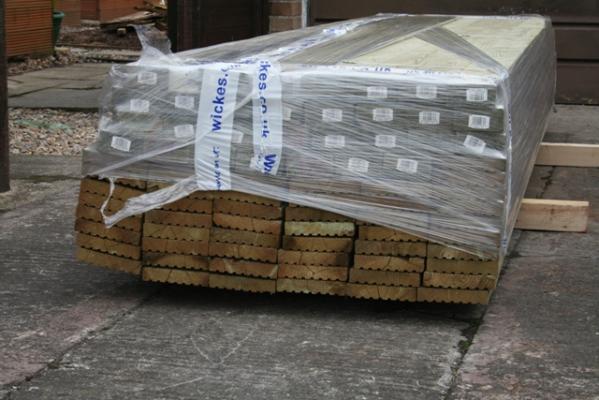-
Posts
6,613 -
Joined
-
Last visited
Content Type
Profiles
Forums
Gallery
Events
Posts posted by Kevin
-
-
May 14
1741 HMS Wager (24), Cptn. Dandy Kidd, wrecked on the South coast of Chile
1747 First Battle of Cape Finisterre. 14 British ships of the line under Admiral George Anson attack a French 30-ship convoy commanded by Admiral de la Jonquière and capture 4 ships of the line, 2 frigates and 7 merchantmen, in a five-hour battle in the Bay of Biscay.
1757 HMS Antelope (54), Cptn. Alexander Arthur Hood, drove ashore and wrecked Aquilon (50) in Audierne Bay.
1781 HMS Nonsuch (64), Cptn. Sir James Wallace, engaged Actif (74).
1801 Tripoli declares war against the United States
1807 Boats of HMS Spartan (38), Cptn. Jahleel Brenton, repulsed by a polacca off Nice.
1812 HMS Thames (32), Cptn. Charles Napier, and HMS Pilot (18), Cptn. John Toup Nicholas took 29 vessels at Port Sapri, Calabria. Most were destroyed by a gale during the night.
-
lol i was fitting a ship to the year and place built, where as the information i found never put this ship as being built there.but the right yeat
-
Maid of the Loch
-
-
one of the tankers destroyed
-
May 13
1793 HMS Iris (32), Cptn. George Lumsdaine, engaged Citoyenne Francaise (32) about 6 leagues from Gibraltar in the first action of the war with a French naval ship.
1796 HMS Salisbury (50) wrecked near San Domingo
1798 Boats of HMS Flora (36) cut out Mondavi,
1807 HMS Cassandra (10), Lt. George Le Blanc, lost by upsetting in a sudden squall off Bourdeaux.
-
it seams so long ago that i was at that stage, getting it right at this stage saves so much time later
looking good
all the best
-
Where did the expression "the whole 9 yards come from"?Whole nine yards & dressed to the nines
Comment from Howard MacGregor in the Niagara Region of Canada: I was told many years ago that the phrase started in the 19th or maybe 18th century and it had to do with women's gloves that went up to the elbows when they went to gala events such as balls and tea at the palace and that those gloves had nine buttons so some occasions meant they had to "dress to the nines."
Comment from Lance: And this, nine yards applies to just the shirt. The more fabric in the shirt, the wealthier you were. It was against the law to wear a shirt made of more material than your class was permitted.
Comment from Brian Morris: I have heard that the saying the whole 9 yards comes from WWII days when the aircraft guns had their bullets in strings of 27 feet. When you went through all of your bullets, you went through the whole 9 yards.
Comment from David Whyte: Apparently, in early England, an entire load of coal for heating was carried in a container that was nine yards long. Most people could not afford it, but if you could, you would take 'the whole nine yards'. I have no idea of the validity of the story, but it seems reasonable.
Comment from Colin: Last night I was having some beers with a few USAF pilots. One insisted that the whole nine yards comes from the B-52. It's bomb-bay is 9 yards long and the phrase would then refer to dropping all the bombs from the bay. Another guy insisted that the phrase comes from WWI when the machine gunners would be issued nine yards of belted-ammunition at a time.
Rosemary wrote: I have been sewing for 30 years, and cannot conceive of the largest-size shirt in the fullest possible cut using up more than half that amount! Unless perhaps the fabric is only a yard wide, or even 25" wide, both of which were not unusual in my grandmother's day. (Hence the expression "all wool and a yard wide" - not a cheap wool blend and only 25" wide.) However, it is quite conceivable that an average-size, moderately-tailored trousers, waistcoat, and vest would use up 9 yards. Brad Bellows claims the 9 yards would also include an overcoat, but I don't believe a full-grown man could get all 4 items out of 9 yards of fabric unless the fabric were much wider than is sold today.
Lawrence says: I've heard that the whole 9 yards comes from the contents of cement trucks - a full load being 9 cubic yards of cement.
Charles B: I was taught that the "Whole Nine Yards" refers to American football. On second down you go the distance for another first down instead of slugging it out for a couple of yards at a time.
Bob Bledsoe" This may be a corruption of the Middle English "to then eyne" (to the eyes). I have heard "the whole nine yards" came from the amount of cloth on a bolt. When someone wanted to make sure they had enough cloth the got the "whole nine yards."
Robert: from good authority, I hear tell that the phrase comes from the Scottish Kilt. In a proper kilt (including all the pleats) there should be 9 yards of material. Anything less is seen as not a proper kilt. Hence the phrase. 9 yards for a shirt seems a bit much.
Charles B: "Dressed to the nines" refers to the theater in Shakespeare's time when the price of a seat depended on how close it was to the stage. The farthest seats were one pence and the closest seats were nine pence. If you sat in the expensive seats you dressed up so as not to look out of place with the other wealthy patrons.
Even more from Ron: In most of India the everyday sari worn by women is made of material six yards in length. However, for weddings and special occasions, saris of nine yards are used. Hence, for these special occasions one goes 'the whole nine yards'. This could just be another example of the myriad influences the British inherited by controlling India for two centuries.
Ron wrote: I'd just like to add to the confusion of the origin of 'whole nine yards'. In most of India the everyday sari worn by women is made of material six yards in length. However, for weddings and special occasions, saris of nine yards are used. Hence, for these special occasions, one goes "'the whole nine yards." This could just be another example of the myriad influences the British inherited by controlling India for two centuries. -
-
May 12
1708 Sir John Leake's Fleet took a French frigate and convoy.
1781 HMS Thetis (32) wrecked off St. Lucia
1796 HMS Phoenix (36), Cptn. Lawrence Halstead, captured Argo (36) in the North Sea.
1797 The mutiny at the Nore begins
1799 HMS Courier cutter engaged a French privateer brig near Winterton.
1806 HMS Pallas (32), Cptn. Lord Cochrane, HMS Indefatigable (44), Cptn. John Tremayne Rodd, and HMS Kingfisher (18), George Francis Seymour, engaged French squadron off Isle of Aix.
Boats of HMS Juno (32), Capt. H. Richardson, and Neapolitan Minerve, Cptn. Vieugna, destroyed batteries at Gaeta.
1808 HMS Amphion (32), Cptn. William Hoste, and boats engaged Baleine at Rosas.
HMS Tartar (32), Cptn. G. E. B. Bettesworth (Killed in Action), and boats engaged at Bergen.
1810 HMS Tribune (36), Cptn. Reynolds, engaged Danish squadron of 4 brigs, under Cmndr Johannes Krieger, outside Mandal, Norway but was forced to withdraw.
1846 U.S. declares war against Mexico
-
On this date, 11 May 1918 - German Submarine SM U-154 is torpedoed in the Atlantic at 3651N 1150W by HM Sub E35.
There were 77 dead (all hands lost).
Wikipedia states, HMS E35 was a British E class submarine built by John Brown, Clydebank. She was laid down on 20 May 1916 and was commissioned on 14 July 1917.
Service history
HMS E35 sank U-154 (one of the 1,512 ton U-boat cruisers originally designed as cargo carrying blockade runners) off the island of Madeira on 11 May 1918. This sinking was helped by British intelligence who had learned of a planned rendezvous between two U-boats off Cape St Vincent.
HMS E35 was sold in Newcastle on 6 September 1922.
-
i was just looking at the wikki for the last ship, what is this hanging off the yards

-
May 11
1762 Cptn. John Jervis (later Eart St. Vincent) HMS Gosport (44) escorting convoy to North America repelled a French squadron, under de Ternay, which was on its way to capture Newfoundland.
1780 Fall of Charleston, SC; three Continental Navy frigates, Boston, Providence, andRanger, captured and frigate Queen of France sunk to prevent capture
1806 Capture of Capri by English squadron under Sir Sidney Smith.
1808 HMS Bacchante (22), Cptn. Samuel Hood Inglefield, captured French national brigGriffon (16), Jaques Gautier, near Cape Antonio in Cuba.
1809 HMS Melpomene (38), Cptn. Peter Parker, destroyed a Danish man-of-war cutter at Huilbo, Jutland.
1862 CSS Virginia blown up by Confederates to prevent capture.
-
-
On this date in 1917, (May 10), the first convoys were introduced by the British, and were immediately successful. Overall losses started to fall; losses to ships in convoy fell dramatically. In the three months following their introduction, on the Atlantic, North Sea, and Scandinavian routes, of 8,894 ships convoyed just 27 were lost to U-boats. By comparison 356 were lost sailing independently.
As shipping losses fell, U-boat losses rose; during the period May to July 1917, 15 U-boats were destroyed in the waters around Britain, compared to 9 the previous quarter, and 4 for the quarter before the campaign was renewed. -
the yellow orca has a nice deep colour to it - is it 3 coats?
-
very nice Andy - good god another post to you - without a mention of wabbits - ooooops
-
sorry i misread the first answer,
-
are the flags just coloured paper?
-
-
flag lockers look great, what did you use for the flags themselves
-
-
May 10
1800 USS Constitution (100), Cptn. Silas Talbot captured French privateer Sandwich (6) from the harbor at Port Plate, Hispaniola.
1808 Start of 5 day engagement between HMS Wizard (16), Abel Ferris, and Requin(16) from off Toulon to Goulette near Tunis.
1862 Confederates destroy Norfolk and Pensacola Navy Yards.
-










Half Moon by Anja - Corel - Wood - 1:50 - (d'Halve Maen)
in - Kit build logs for subjects built from 1501 - 1750
Posted
nice to see you both back, even the post counter has had a break